目次
Craft Report
Durable and Beautiful Handmade Washi from an 800-Year-Old Paper Village.
Kurotani Washi is produced in Kurotani and Yashiro, Ayabe City, Kyoto Prefecture, and the surrounding areas. With a history of more than 800 years, these traditional workshops still craft paper by hand using high-quality kozo (mulberry). Each sheet is carefully made using the tesuki (hand-scooping) method passed down for generations.
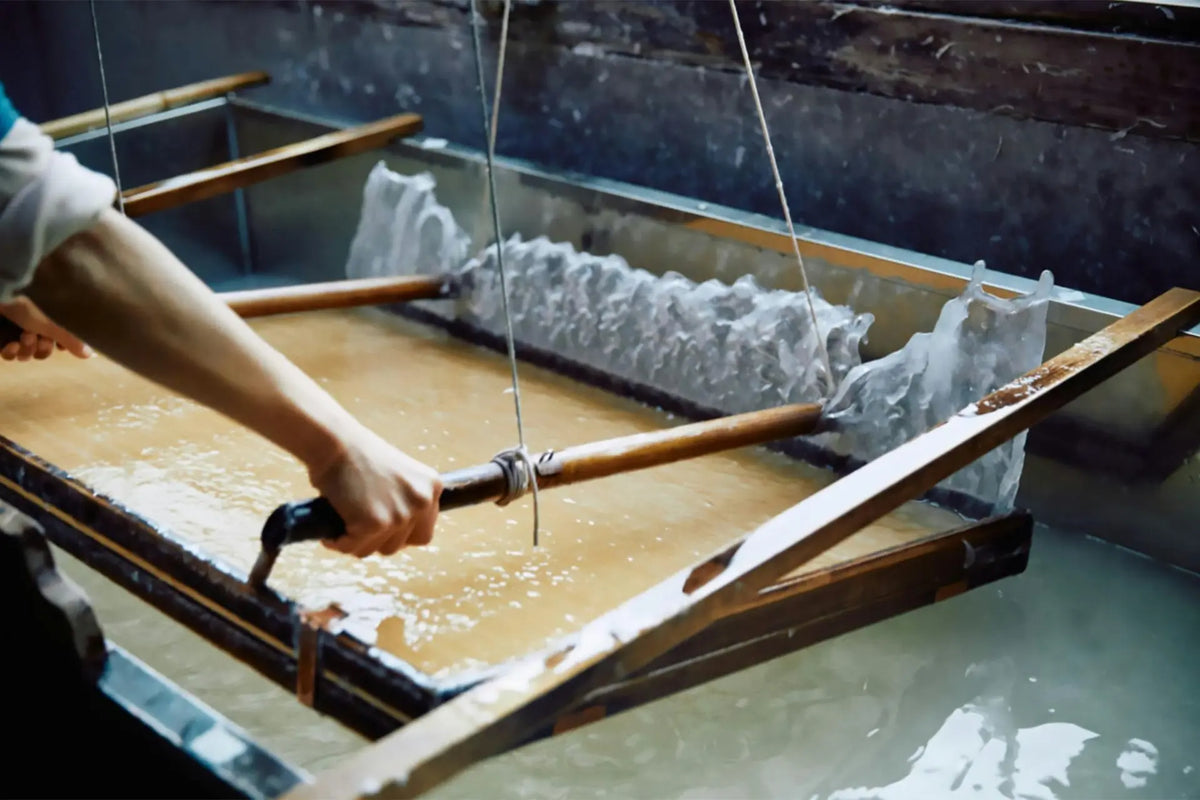
Handmade washi like Kurotani Washi is strong, durable, and long-lasting. The thick, long kozo fibers are thoroughly intertwined by hand, giving the paper excellent durability. Properly stored, it can last for more than a thousand years. Because the fibers are tightly bound, it resists tearing and remains strong even when wet. For centuries, it has been essential in daily life for lanterns, umbrellas, shōji screens, and wrapping. In the Taishō era, the government recognized it as “Japan’s strongest paper,” using it to make ration bags for hardtack. Its durability has also led to its use in cultural treasures such as the shōji of Nijō Castle (a World Heritage Site).
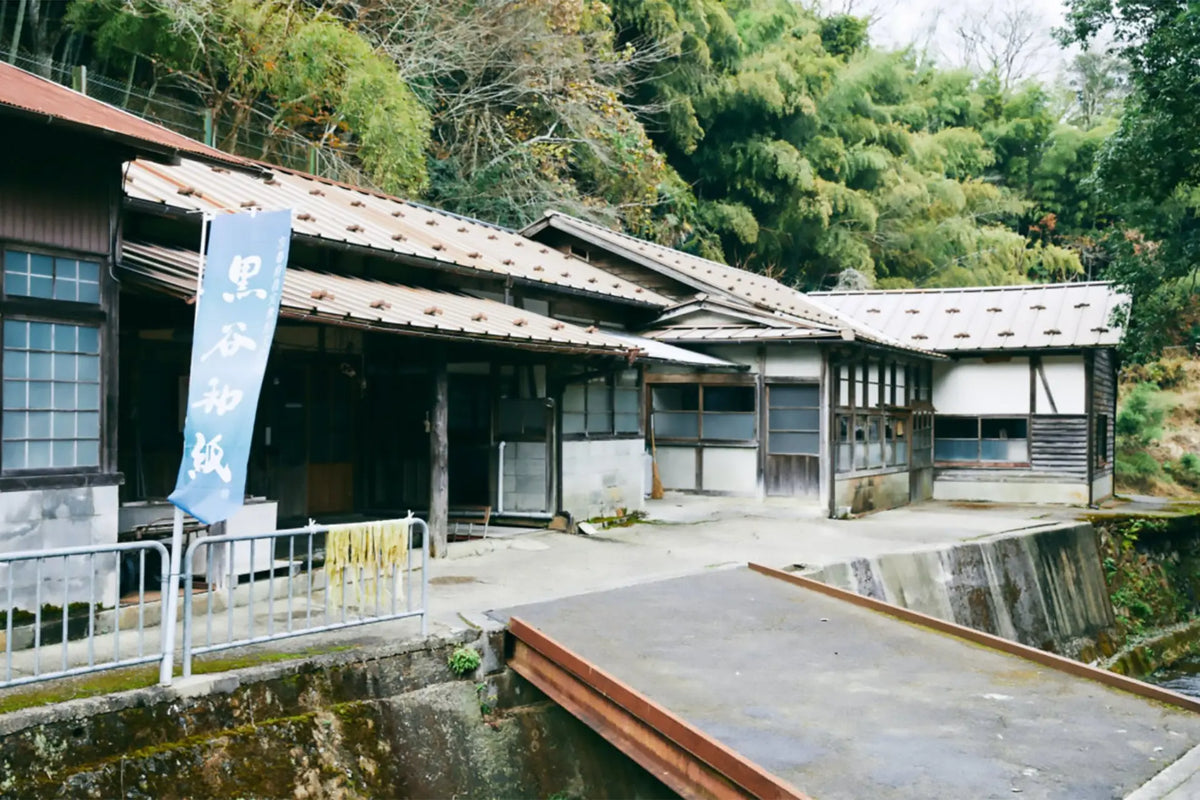
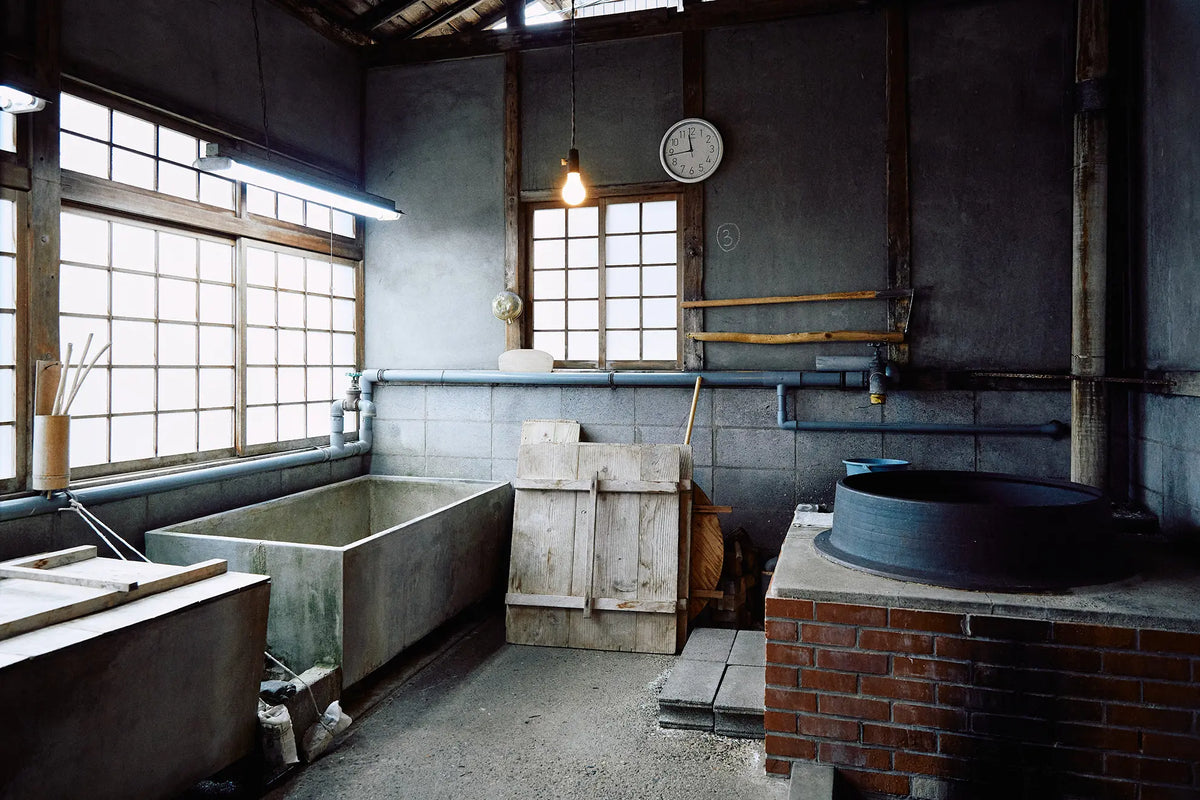
The workshop where Kurotani Washi is made.

Kozo, the raw material of washi.
Kurotani Sōfu: A New Initiative Bringing Washi into Fabric.
Recently, artisans have begun producing fabric woven with handmade Kurotani Washi, called Kurotani Sōfu. This material is used to create colorful stoles and other items. Historically, washi was also valued for its warmth and used in clothing during the Edo period.
Though shifu (paper cloth) was once common, its labor-intensive process caused it to decline with modernization. Reviving the idea, Kurotani artisans collaborated with Tango Chirimen weavers to develop paper suitable for weaving, refining dyeing and weaving techniques. With guidance and repeated testing at research institutes in Kyotango, they achieved stable quality.
The warp threads are silk, while the weft is paper yarn made from Kurotani Washi, giving the fabric unique irregular “slubs” (fushi). Using the traditional karami-ori weave and dyed with the Kyō kanoko shibori technique, the fabrics combine vivid color with washi’s natural qualities—softness, strength, humidity control, and insulation—blended seamlessly with Tango’s weaving heritage.
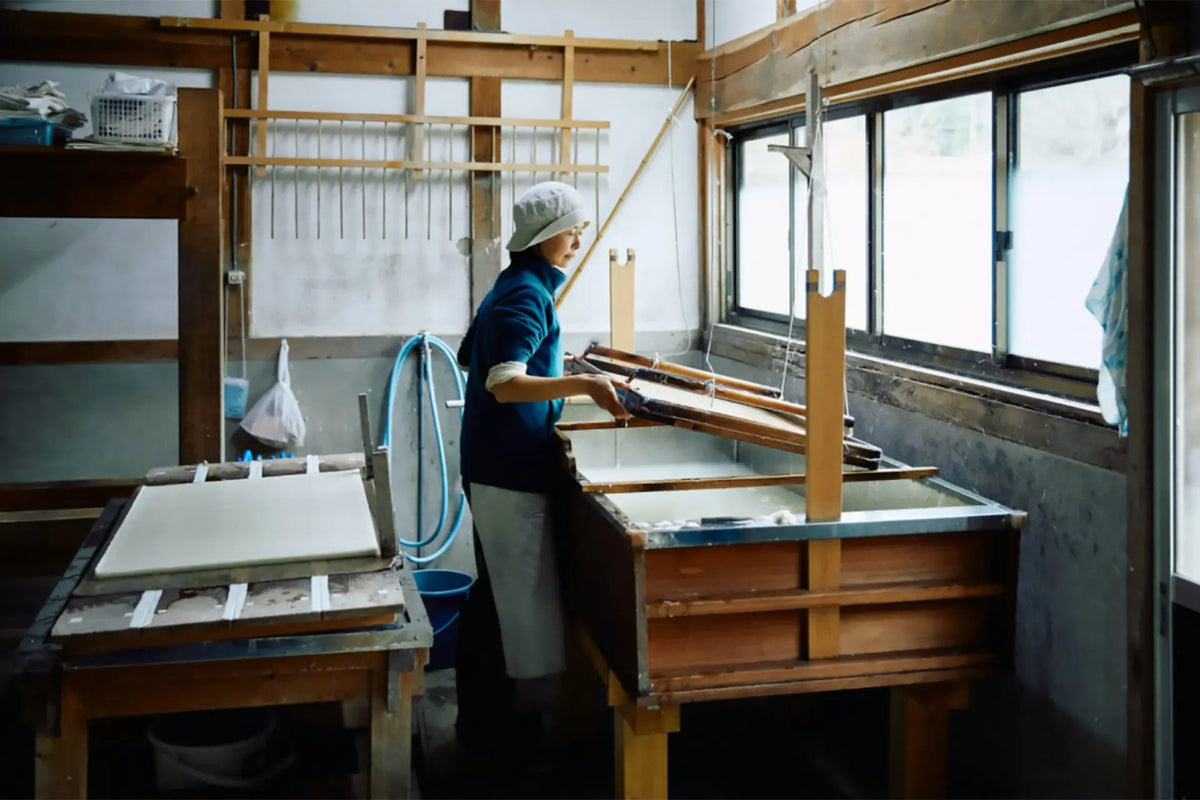
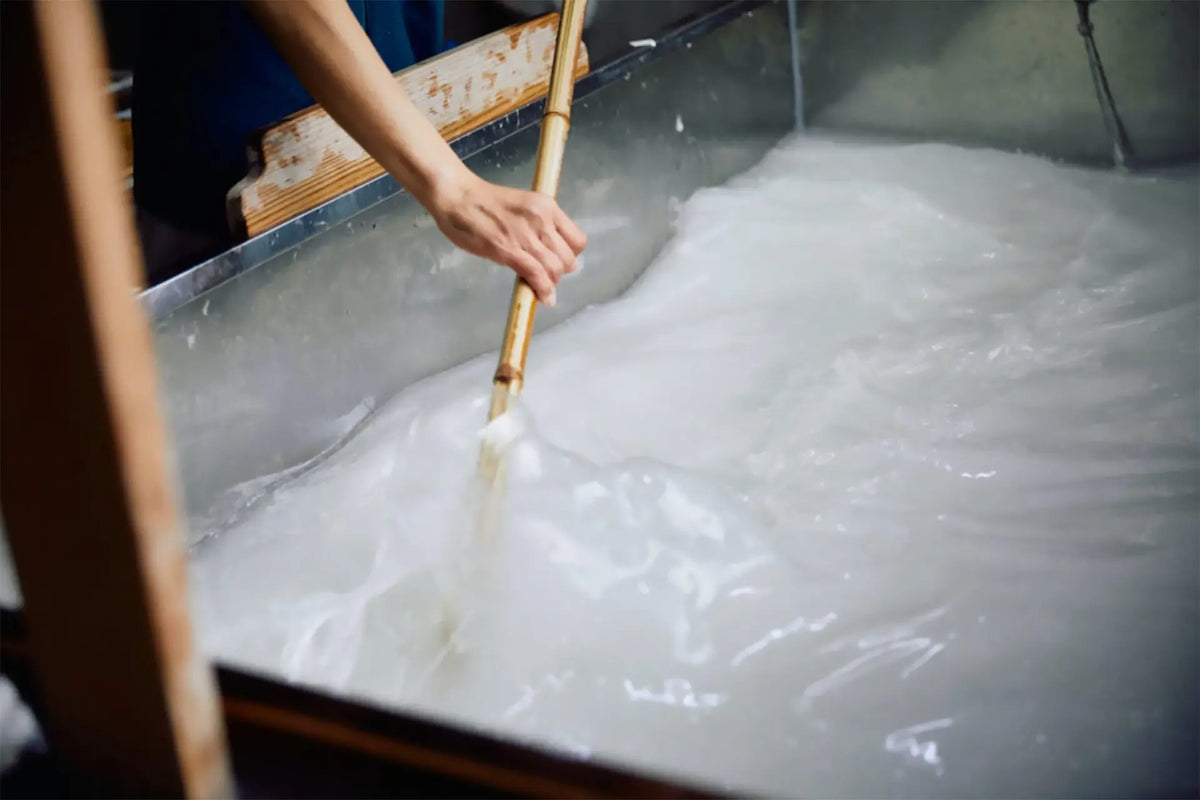
Each artisan experiments to find the best thickness and method for their own hand-scooping style.

Freshly scooped sheets of washi.
“Continuing to Make Paper as Long as Strength Allows.”
Yumiko Moniwa, originally from Iwate Prefecture, moved to Kurotani in 2016 to become a washi artisan. Formerly a schoolteacher in Hokkaido, she grew interested in regional crafts when educational guidelines added “traditional culture” to the curriculum. After the 2011 Great East Japan Earthquake, she was dispatched to a school in Sendai, where she encountered the local craft of Shiroishi Washi. Witnessing the transformation of plants into beautiful paper left a deep impression, inspiring her to leave teaching and pursue a craftsperson’s life. She trained in several paper-making regions before joining Kurotani as an apprentice.
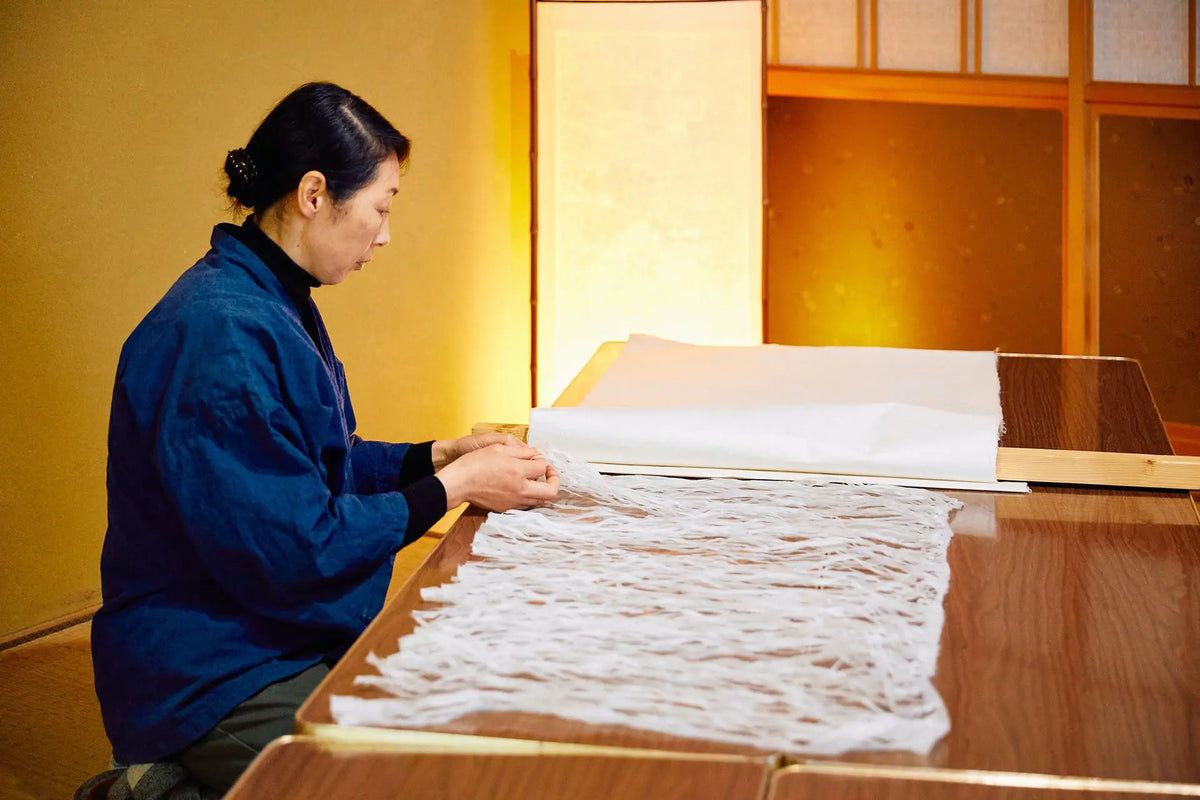

Paper yarn made from washi for weaving Kurotani Sōfu.
“My dream is to keep making paper as long as my strength allows, and when I retire, to support other papermakers,” says Moniwa. From cultivating kozo to finishing sheets, every shortcut creates greater problems later. Even with the same materials, the process changes with the day’s temperature and conditions. Washi-making is full of challenges, but it is precisely this difficulty that makes it meaningful and rewarding.
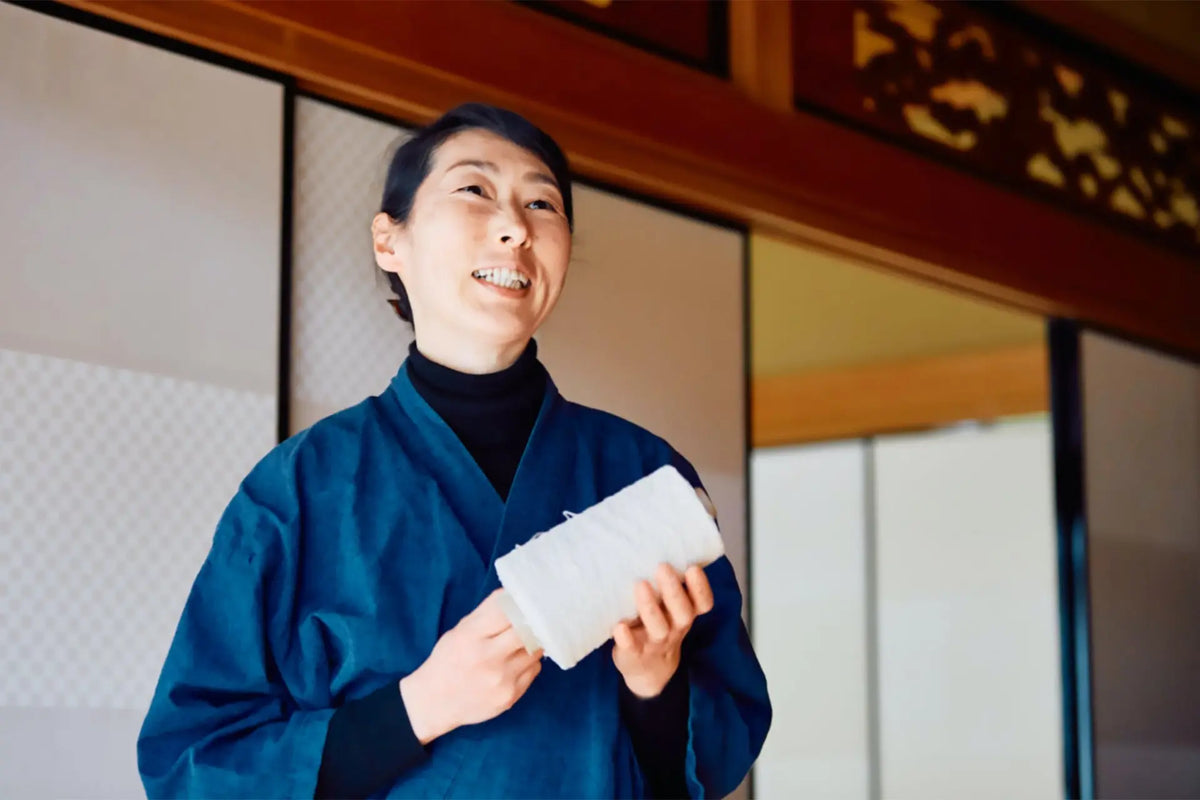
Washi artisan Yumiko Moniwa.
The name Kurotani Sōfu comes from the character So, which carries the meaning of both “to support, to care for others” <so> and “to weave together into one” <to unite into one>. It expresses the spirit of creating a “new fabric” from washi. Rooted in the history and techniques of Kurotani Washi, and carried forward by artisans like Moniwa, it continues to accompany people’s lives while connecting tradition to the future.
Interview: Takuya Arata Photography: Daiki Morishita Text: Kento Onishi





